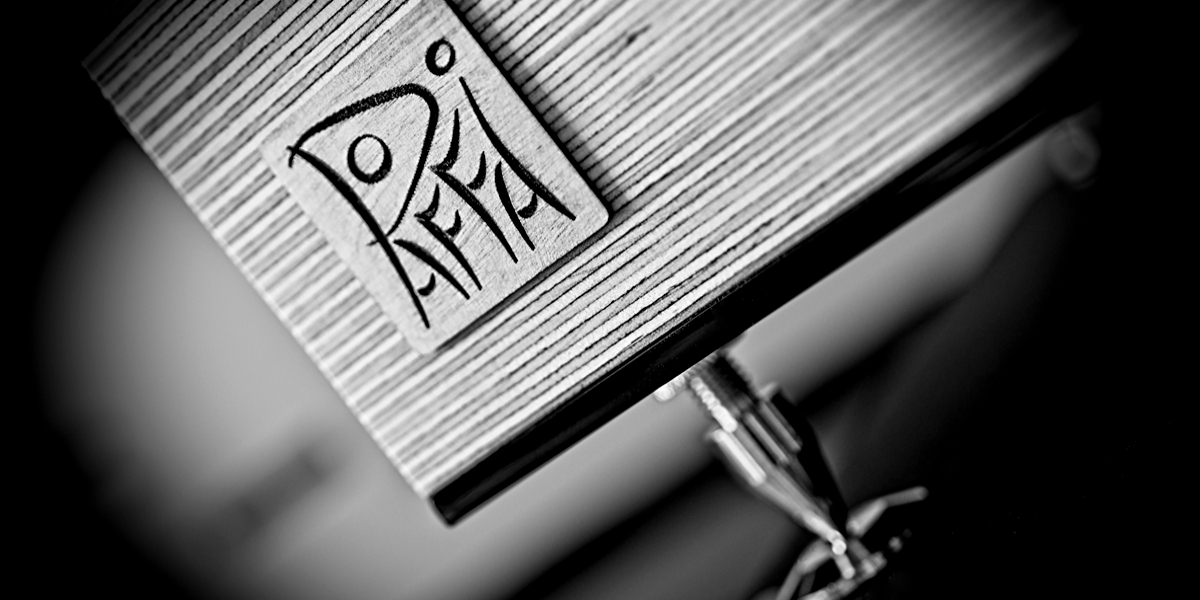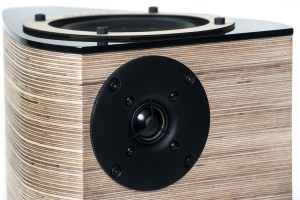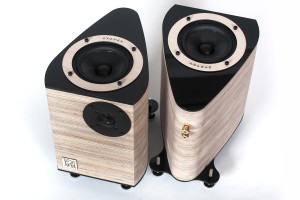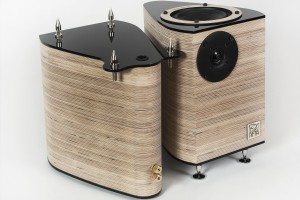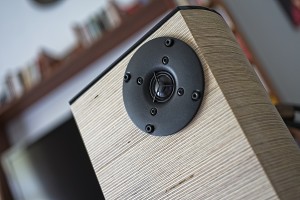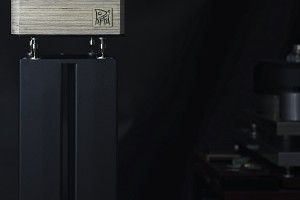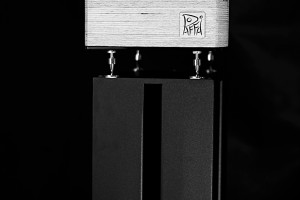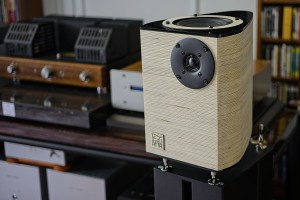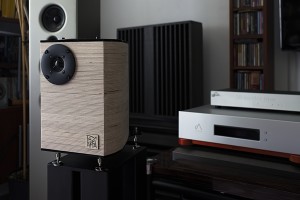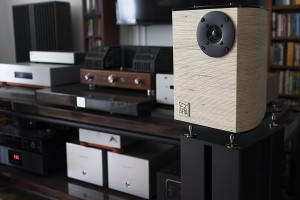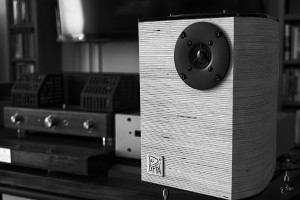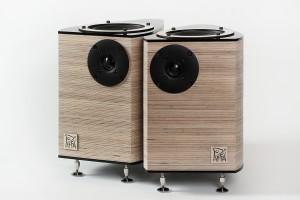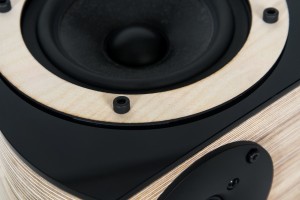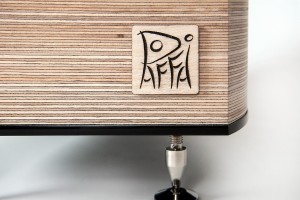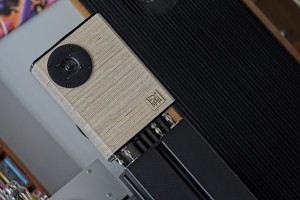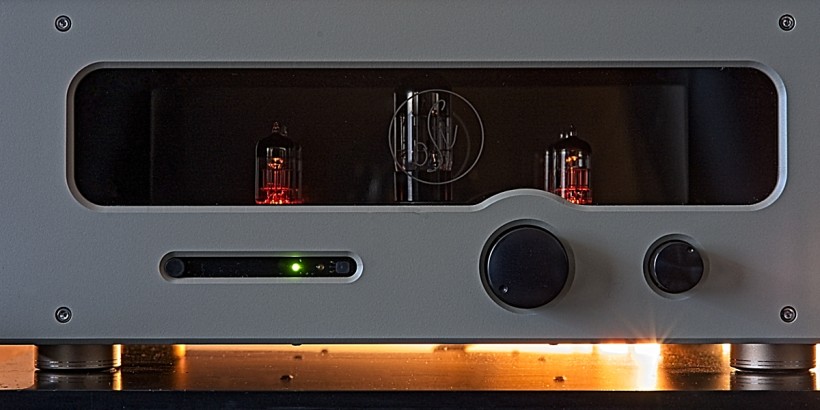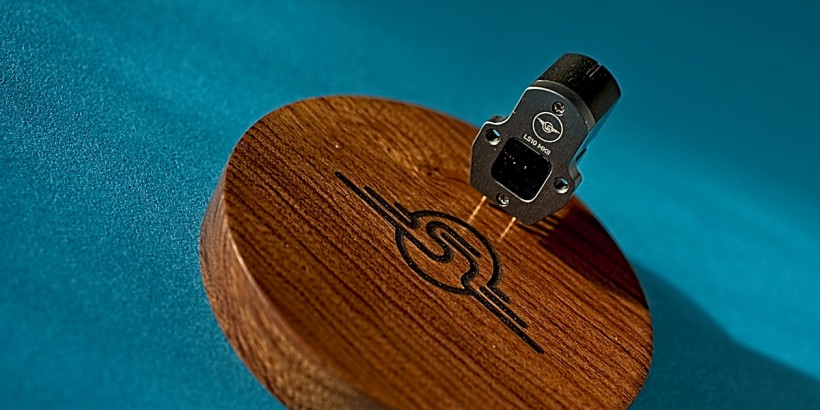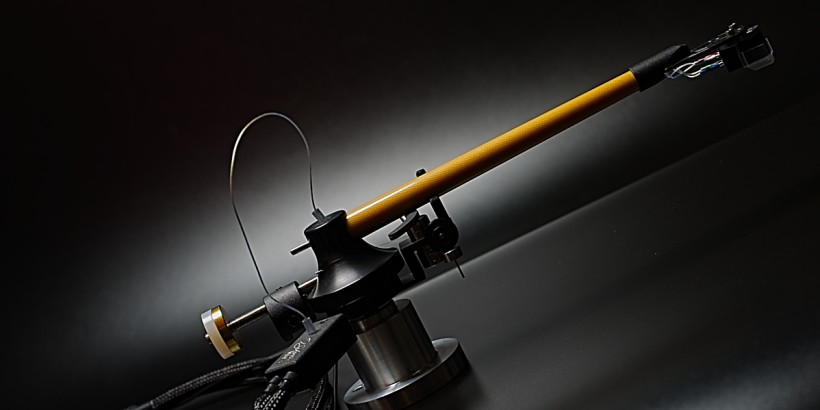Hungary may not have the biggest audio industry in Europe, but I saw some very interesting products coming from this country more than once before. I would like to present to you another, as it turned out, quite special one that I received for a review, the Syzygy loudspeakers by Raffai-Audio.
Introduction
While music is supposed to be a soothing factor, one that cools people down, lets them relax, many audiophiles tend to vigorously discuss why some type of product they prefer is better than others. Whether it is analog vs digital, solid-state vs tube, MM cartridges vs MC ones, silver cables vs copper, or virtually anything else audio-related, such discussion easily get quite heated. Why? Because audio, or actually what we believe to be the “right” sound and how each individual hears the sound/music reproduced by audio system is very subjective. All of us have our preferences and are ready to defend them – that’s human nature. When it comes to loudspeakers there are also fans of some particular designs or solutions. There are those who prefer horns, open baffles, closed cabinets, bass-reflex designs, paper drivers, ceramic or Kevlar ones, and so on.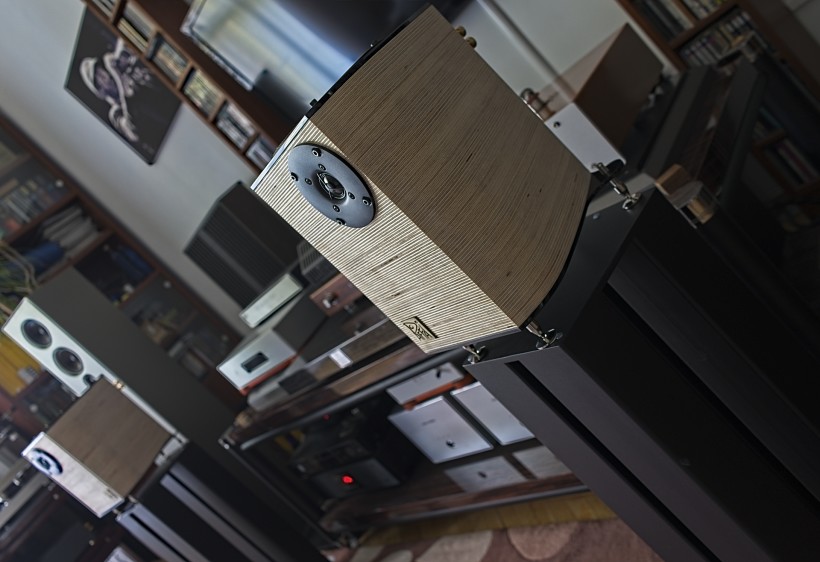 One thing I noticed though, is that very few audiophiles ever really speak against compact/shelf/stand-mount/monitor (whatever you want to call them) loudspeakers. They may not be the first choice for all music fans, but most appreciate their advantages. There are even some iconic models, say, from the so-called BBC school, also ones designed by Franco Serblin and others, that have been sold (in total) in dozens if not hundreds of thousands pairs over the last forty years or so. What better proof do you need that there is a huge market for such small speakers? If you need to ask it probably means you’ve never really tried them out. You definitely should. Lot of people simply love them for what they are, what they have to offer disregarding their limitations. To be clear, all speakers, no matter the design or size, have pros and cons. There simply are no perfect ones so it always comes down to making the “right” choice for particular person/system/room.
One thing I noticed though, is that very few audiophiles ever really speak against compact/shelf/stand-mount/monitor (whatever you want to call them) loudspeakers. They may not be the first choice for all music fans, but most appreciate their advantages. There are even some iconic models, say, from the so-called BBC school, also ones designed by Franco Serblin and others, that have been sold (in total) in dozens if not hundreds of thousands pairs over the last forty years or so. What better proof do you need that there is a huge market for such small speakers? If you need to ask it probably means you’ve never really tried them out. You definitely should. Lot of people simply love them for what they are, what they have to offer disregarding their limitations. To be clear, all speakers, no matter the design or size, have pros and cons. There simply are no perfect ones so it always comes down to making the “right” choice for particular person/system/room.
I’ve recently had a chance to talk a few times to Jerry Bloomfield from Falcon Acoustics, the British company that offers the most genuine version of the legendary LS 3/5 A mini-speaker licensed by BBC. I asked him why, in his opinion, today there are still so many people ready to pay quite a significant price for “the old shoe-box-size design” they offer – is it just a matter of its legendary status? Today same amount of money can easily buy you some larger, floor-standing speakers. He told me (I am paraphrasing) that while the legendary status might have something to do with the LS 3/5A’s popularity, the main reason is that people can hear how great the music sounds with them even if these tiny boxes are not able to reproduce the lowest bass notes. But the midrange and treble and even mid- and upper bass they offer are amazingly accurate, clean, rich, involving, simply put – true and natural. Well, it’s not the Falcon Acoustic speakers review, so why do I bring it up? Simply because I believe that Jerry is right in this regard and what he said is true for all good compact speakers and that it’s also a reason why so many music lovers appreciate them so much. Again, I mean the good ones, as the size is not enough to ensure proper sound quality. And while it’s not easy to make a truly great sounding ones, many companies have tried and succeeded to bigger or lesser extent.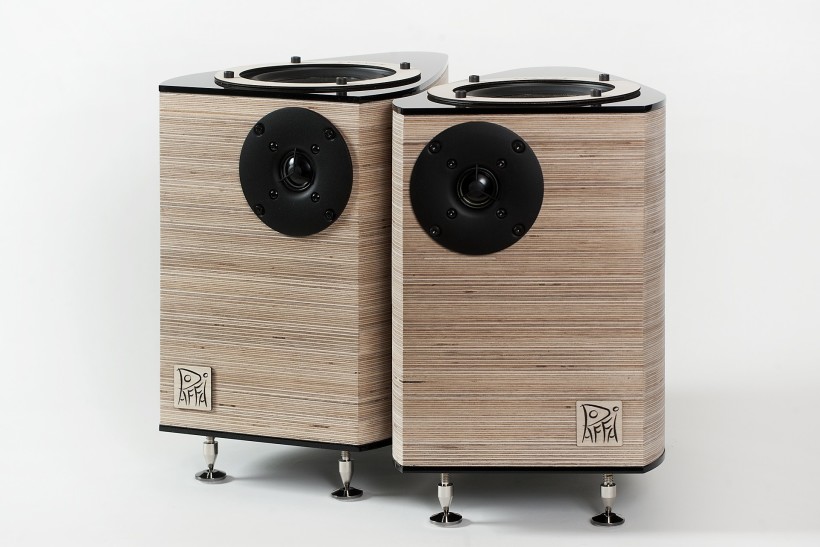 One of the new contenders on the market offering such speakers is the Raffai Audio from Hungary. To be perfectly honest, I’d never even heard about this company. I mean before I received an email from Mr. Laszlo Raffai, the man behind the brand. As he explained in his introductory email:
One of the new contenders on the market offering such speakers is the Raffai Audio from Hungary. To be perfectly honest, I’d never even heard about this company. I mean before I received an email from Mr. Laszlo Raffai, the man behind the brand. As he explained in his introductory email:
“RAFFAI High-End loudspeaker manufacturer from Hungary would really appreciate if we could send our latest semi-omnidirectional, 2-way, bass-reflex loudspeaker called SYZYGY for review. It was developed in co-operation with well-known HumanAudio brand (battery powered Libretto CD-player, Fortepiano & Duoforte amplifier, etc.).”
Just one look at the attached photo and I knew I wanted to listen to this exotic design. An intriguing shape, woofer placed on top of the speaker with tweeter on the front, seemingly beautiful make&finish – I was hooked. Even more so when I read the following:
“Developing of SYZYGY speaker started about 5 years ago. Our aim was a clear and uncompromising realistic reproduction of music, regardless of music genre. The result is an amazingly life-like musical atmosphere.”
The model in question that was sent for a review is called Syzygy. As I understand it is actually their first one even though they also evoke 25 years experience in the audio industry. What does the word “Syzygy” mean? In case you’re not familiar with the term, the manufacturer has an answer ready on their website:
In Greek mythology: The unity of eternity as an active and passive, divine unity of a man and a woman.
In astrology: Conjunction of the moon with the sun.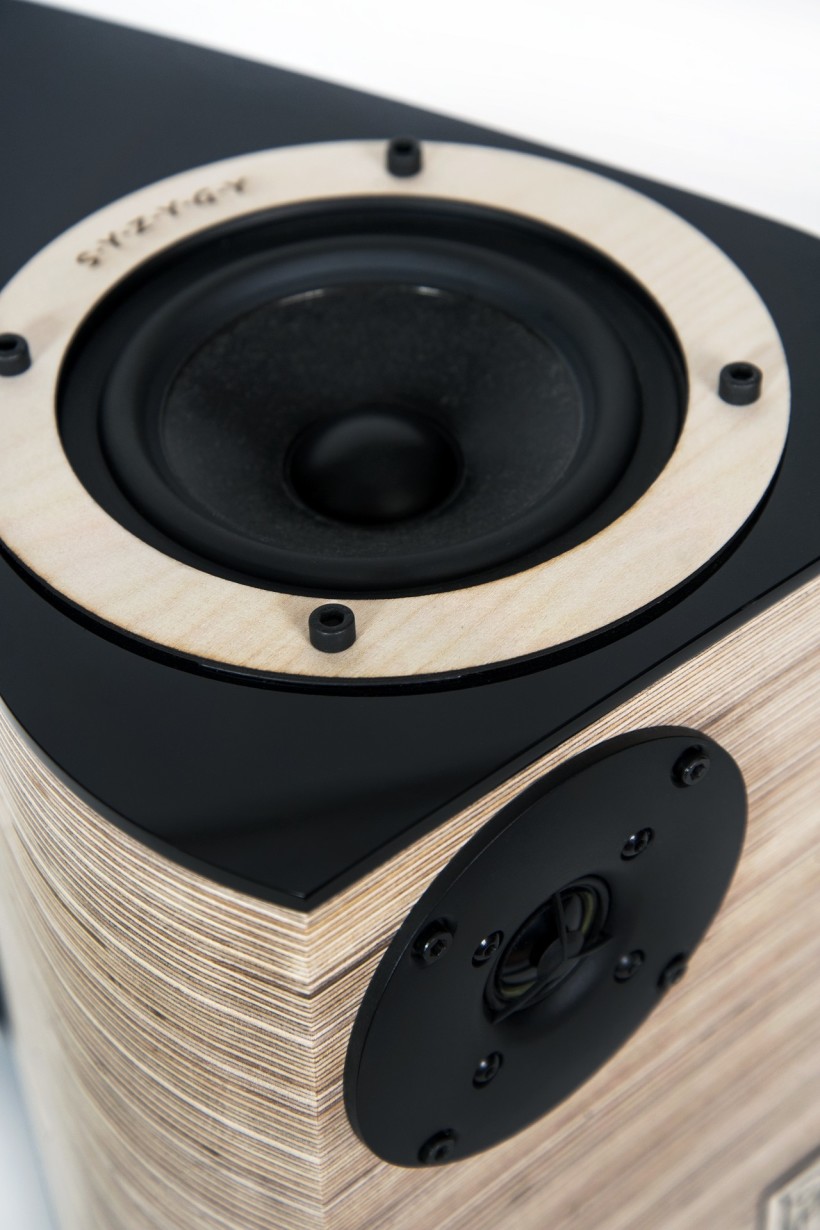 It is safe to assume, that by choosing this term for their speakers’ name, the designers claims that they managed to combine seemingly contradictory features in one design. It should make you at least curious. It surely did the trick for me and made me wondering, how these bit strange looking boxes would sound like. To be perfectly honest at the time, having seen a single photo of these speakers without anything else around them that would hint its actual size, I thought Syzygy were bigger. But, as some say, it’s not the size that matters – I simply wanted to listen to them in my system. I confirmed my will and readiness to review this intriguing design. The contact with Mr. Laszlo was very professional throughout several consecutive emails. He answered all my questions, kept me updated about the status of the review pair production and breaking-in process and finally about the shipment. In the meantime I studied manufacturer’s website and realized that it was quite a small speaker. Based on the information about stands recommendation (regarding dimensions, not particular brand) I contacted a renown Polish manufacturer, who is one of leading Polish brands that succeeded in many countries all over the world, the Rogoz Audio. Its owner and chief designer, Mr. Rogoz, agreed to prepare and send me stands I could use with Syzygy, the 4QB80 model to be exact. These arrived few days after the speakers but once they did I could finally satisfy my curiosity and start my assessment. For you information the ideal height of stands for SYZYGY can be calculated by measuring the height of your ear in your listening position minus 25cm. Long adjustable front and back spikes allow user to fine-adjust the positioning of each speaker. Another important information provided by manufacturer is that horizontal surface of stand should be at least 15cm x 23cm (width x depth) and the distance from walls should be around 0,7m-1,2m. I followed the instructions and then made some minor corrections (these will be necessary in most rooms as they are all different) until I was satisfied with the sonic results.
It is safe to assume, that by choosing this term for their speakers’ name, the designers claims that they managed to combine seemingly contradictory features in one design. It should make you at least curious. It surely did the trick for me and made me wondering, how these bit strange looking boxes would sound like. To be perfectly honest at the time, having seen a single photo of these speakers without anything else around them that would hint its actual size, I thought Syzygy were bigger. But, as some say, it’s not the size that matters – I simply wanted to listen to them in my system. I confirmed my will and readiness to review this intriguing design. The contact with Mr. Laszlo was very professional throughout several consecutive emails. He answered all my questions, kept me updated about the status of the review pair production and breaking-in process and finally about the shipment. In the meantime I studied manufacturer’s website and realized that it was quite a small speaker. Based on the information about stands recommendation (regarding dimensions, not particular brand) I contacted a renown Polish manufacturer, who is one of leading Polish brands that succeeded in many countries all over the world, the Rogoz Audio. Its owner and chief designer, Mr. Rogoz, agreed to prepare and send me stands I could use with Syzygy, the 4QB80 model to be exact. These arrived few days after the speakers but once they did I could finally satisfy my curiosity and start my assessment. For you information the ideal height of stands for SYZYGY can be calculated by measuring the height of your ear in your listening position minus 25cm. Long adjustable front and back spikes allow user to fine-adjust the positioning of each speaker. Another important information provided by manufacturer is that horizontal surface of stand should be at least 15cm x 23cm (width x depth) and the distance from walls should be around 0,7m-1,2m. I followed the instructions and then made some minor corrections (these will be necessary in most rooms as they are all different) until I was satisfied with the sonic results.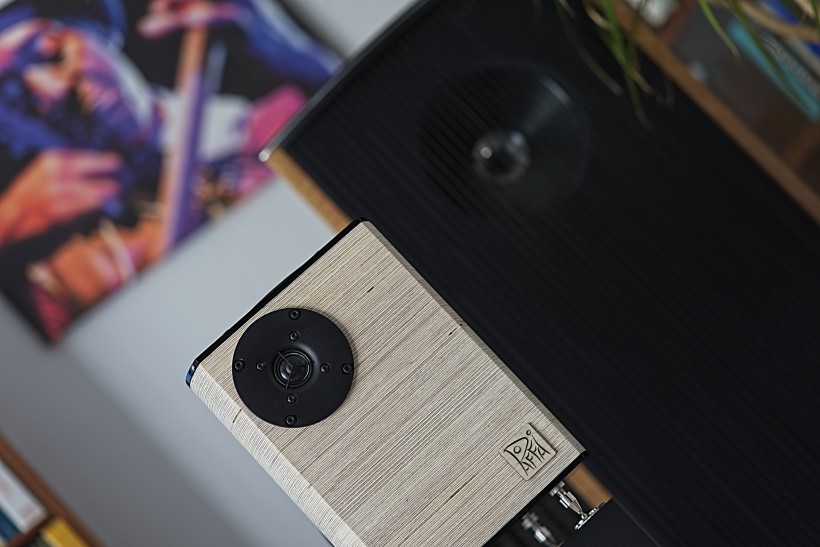
Design
Syzygy by Raffai-Audio is a rather small stand-mount, 2-way loudspeaker. It’s been developed for small to medium rooms (up to 35 sq m). Just one look at it and you can see it is not a typical design. While the dome tweeter sits in the upper corner of the front baffle, which is expected (I mean the front part at least), the mid-woofer with coated paper membrane is placed on the top of the cabinet. As the manufacturer explains, there were several benefits of such placement. First of all, the unique positioning of drivers was a means to achieving almost perfect and frequency independent phase match of the two speakers as well as to realize additional acoustic crossover effect completing the conventional electronic crossover at the same time. A prudent selection of drivers was a must to achieve this goal. It also allowed designers to use a simplistic crossover featuring premium components. While the latter factor is always important, the former is often a key to truly coherent, natural performance. Some say – the simpler the crossover the more natural sound. As Laszlo explained, another reasoning behind placing the woofer on the upper side of the cabinet was to try and terminate contrary movement of cabinet to the woofer itself and to maximize transmission efficiency of low frequency reproduction. As a result, cabinet and speaker stand can be lightweight without any negative impact to bass response. One more benefit of placing mid-woofer on the top of the cabinet pointed out by Laszlo is an ability to virtually reduce vertical dimension of mid-woofer cone to let place mid-woofer and tweeter vertically as close to each other as possible. This results in almost one point source acoustic experience even in case of a two-way speaker.
Another key feature of this design is the cabinet. It has a roughly triangular shape with all three corners nicely rounded. According to manufacturer the whole cabinet design is very special as it features a standing wave and echo absorbing internal structure. As a result there was no need to use any internal damping material. On top and on the bottom manufacturer used layer of black acrylic while the cabinet itself seems to be made of some kind of plywood (birch would be my guess). These materials plus no need for using any damping inside resulted in a small weight of these speakers. This brings me to a some practical advice/digression. First of all I used Blue Tack between washers under spikes and stands to make sure the whole speaker doesn’t slide on top of the stand. Secondly, unless you use some very light speaker cables be careful how you run them to the speaker posts as their weight may tip the speaker over. The nice, gold-plated speakers connectors are placed on the back edge of the cabinet close to its top. The idea was surely to have the internal wiring as short as possible, which is a good thing, but at the same time it means shifting the gravity center of the speaker up which considering its light weight means that user needs an extra caution while connecting to an amplifier. End of digression. The woofer on top is surrounded with a ring (the serves also as intermediary between driver and cabinet) that seems to be made of the same material as the whole cabinet. I’m guessing again but it seems that it is as much decorative as practical element that helps to control vibrations transmission between driver and cabinet. I haven’t mentioned it yet, but the make and finish of Syzygy is top notch which combined with it exotic design makes it a beautiful object that will attract many eyes.
Sound
I’ve mentioned the legendary tiny LS 3/5A monitors – I’ve reviewed a few of these prepared by various brands and loved them (some more than others). In fact at the same time as Syzygy I also had a chance to assess the Falcon Acoustics latest incarnation of this model, which is an amazingly musical, easy to fall in love with speaker. There was also a time when I owned the fantastic Acoustic Energy AE-1 Ref II (I still can’t understand what came over me and made me sell these beauties) and was absolutely happy living with them for few years. Hence my sentiment, if not love, for this type of small speakers. Both these models despite being tiny were very capable of delivering a surprisingly big, punchy sound even though my room is not that small (24 sq m, roughly 3m high). And they came to my mind right after I finally started to listen to Syzygy. It was not about all of them sounding the same, but rather sharing some sonic features unique to the best representatives of compact speakers that I will discuss in a moment.
Each time I get a new component for a review I, whenever possible, let it play in my system for a few days to settle in, to make sure it is fully broken-in and during that time a lot of music is actually selected by the so-called “Roon Radio”. This time was no different. At first I chose some favorite albums and then Roon took over and played many tracks for me including some I’d forgotten I even knew/had. This way of getting to know a new component is fun but it also allows me to move outside certain part of my music collection that is most often used during reviews. It was the case during first week or so with the Hungarian speakers. It is also a good way the get surprised by capabilities of reviewed item, as it has to present (or not) a versatility, that allows it to play various music genres, and recordings of various quality. Sure, I do have some super audiophile recordings in my collection, but since it’s the music that is always what really matters for me and it’s not always well recorded, such a random selection of tracks means the tested component and the whole system have to be able to sometimes deal with not-so-perfect sound quality and still do a solid job.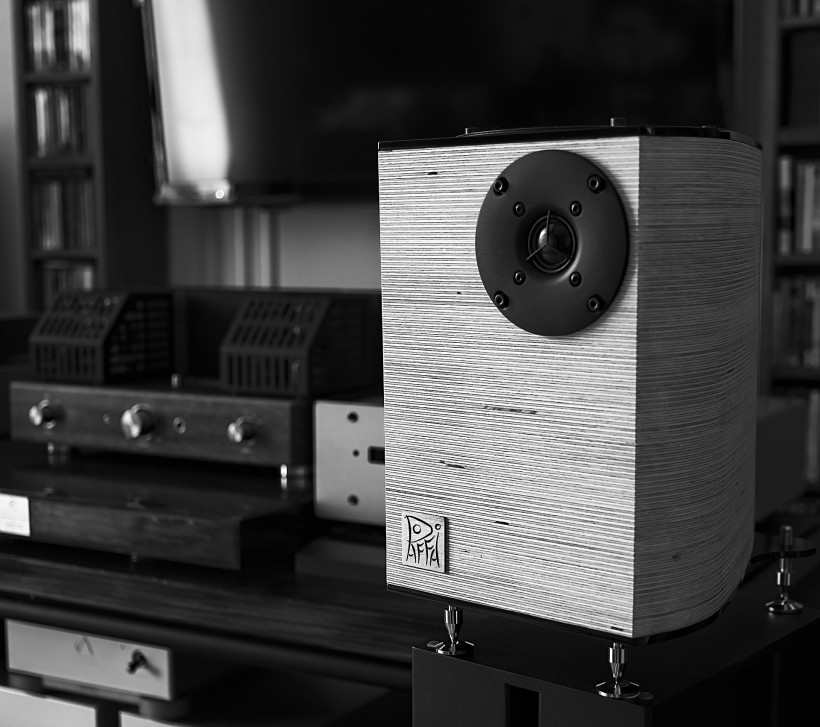 One of the first tracks Roon selected for me was one from the Arne Domnerus’ “Antiphone blues” album. If you don’t know it, it’s a saxophone backed up by church organs recorded in a big church, obviously. It would probably be one of my last choices for testing such small speakers and yet when the music started to flow it caught my attention almost immediately. I sat there very still trying not to miss even a single note. Everything about the saxophone was simply mesmerizing – timbre, texture, wealth of tiny details, amazing reverb in the huge space of the church – all that left me astounded with these speakers capabilities, with how realistic this presentation was. And that was even before sax was joined by the organs. The latter let the former enjoy the spotlight, while rendering a mighty, but relatively quiet background. Sure, my 3-way big floor-standers with a 12 inch woofer dig deeper into the lowest notes, add more weight and power to the performance but I didn’t care about it at the moment at all. It sounded really, really good, convincing, engaging also because of yet another aspect, that I love about this album for, assuming that a given system is capable of reproducing it in all its glory. I mean the huge space of the church that was so well caught on tape. While larger speakers make organs a more significant part of this music, the Syzygy did a fantastic job of completely disappearing from my room and making me feel like I was actually sitting there, a small man in a huge church, listening to magnificent music surrounding me from all sides due to numerous reverbs. What a wonderful. satisfying experience it was! It also helped me realize that when reviewing these speakers I should pick any tracks and albums I like, no matter what kind of music or genre they represent. Even if such mighty instruments as church organs are be involved.
One of the first tracks Roon selected for me was one from the Arne Domnerus’ “Antiphone blues” album. If you don’t know it, it’s a saxophone backed up by church organs recorded in a big church, obviously. It would probably be one of my last choices for testing such small speakers and yet when the music started to flow it caught my attention almost immediately. I sat there very still trying not to miss even a single note. Everything about the saxophone was simply mesmerizing – timbre, texture, wealth of tiny details, amazing reverb in the huge space of the church – all that left me astounded with these speakers capabilities, with how realistic this presentation was. And that was even before sax was joined by the organs. The latter let the former enjoy the spotlight, while rendering a mighty, but relatively quiet background. Sure, my 3-way big floor-standers with a 12 inch woofer dig deeper into the lowest notes, add more weight and power to the performance but I didn’t care about it at the moment at all. It sounded really, really good, convincing, engaging also because of yet another aspect, that I love about this album for, assuming that a given system is capable of reproducing it in all its glory. I mean the huge space of the church that was so well caught on tape. While larger speakers make organs a more significant part of this music, the Syzygy did a fantastic job of completely disappearing from my room and making me feel like I was actually sitting there, a small man in a huge church, listening to magnificent music surrounding me from all sides due to numerous reverbs. What a wonderful. satisfying experience it was! It also helped me realize that when reviewing these speakers I should pick any tracks and albums I like, no matter what kind of music or genre they represent. Even if such mighty instruments as church organs are be involved.
Looking for another album to play, for some reason I remembered, that a few years back, when visiting Kondo’s factory, I had a chance to go to the legendary Blue Note Tokyo music club. Together with Masaki-san, his lovely wife, Polish distributor Wojtek Szemis and Kondo’s international representative Charles, we witnessed a brilliant performance of the Steps Ahead. Apart from the music (and delicious food!) I also enjoyed the special ambiance of that place. Ever since I keep looking for any live performances recorded there (not many of them, unfortunately, are available) and one of the latest finds is the Ai Kuwabara’s “Live in Blue Note Tokyo” released earlier this year. She is a young, incredibly talented Japanese pianist who, for this set, was joined by drummer Steve Gadd and bassist Will Lee. The Syzygy did exactly what I expected from high class monitors – they again disappeared from my room completely leaving me with a lively, dynamic performance taking place in the space in front of me. Space not limited by the walls and ceiling of my room but Tokyo Blue Note’s. A space, I should add, that seemed somewhat familiar as my memories took me back to my visit there immediately. You may think that piano, bass guitar and drums are also not the best possible match for compact loudspeakers. If you do, you’re simply wrong, or maybe you didn’t have a chance to listen to some good ones. The realism of the presentation was stunning. Bass was fast, taut, yet powerful, and since Will Lee didn’t really go for the lowest notes, judging only by what I could hear it would have been difficult to tell, that music was reproduced using relatively small speakers. Even more so, since also the piano sounded deep, rich and so vibrant and it was presented as a large, mighty instrument that it was. I could see it just few meters away from me and it was a very convincing image. With some monitors when you play piano the size of speakers is often pretty obvious from the start as they are not able to present big enough image of this great instrument, but Syzygy did a great job in this respect. On the one hand the image itself was rather big, on the other the scale and power of its performance were quite fitting. Don’t get me wrong – bigger speakers do add more body to this instrument but when I listened to Raffai Audio little boxes it was definitely not the first, second or even third thing that came to my mind. I focused on music, accurate timbre, flow, passion, fast attack and when needed long sustain and decay phases, or in other words on how convincing and engaging the performance was. Since jazz drums are usually also not the same as heavy-metal or rock ones, so there was nothing missing there either. When needed they sounded fast, with proper immediacy to every stick strike and equally fast response from a drum or a cymbal. The performance was highly energetic, dynamic, accurate in terms of timbre and timing, had a proper flow and openness to it. I simply loved it (so I do recommend the album too).
With some monitors when you play piano the size of speakers is often pretty obvious from the start as they are not able to present big enough image of this great instrument, but Syzygy did a great job in this respect. On the one hand the image itself was rather big, on the other the scale and power of its performance were quite fitting. Don’t get me wrong – bigger speakers do add more body to this instrument but when I listened to Raffai Audio little boxes it was definitely not the first, second or even third thing that came to my mind. I focused on music, accurate timbre, flow, passion, fast attack and when needed long sustain and decay phases, or in other words on how convincing and engaging the performance was. Since jazz drums are usually also not the same as heavy-metal or rock ones, so there was nothing missing there either. When needed they sounded fast, with proper immediacy to every stick strike and equally fast response from a drum or a cymbal. The performance was highly energetic, dynamic, accurate in terms of timbre and timing, had a proper flow and openness to it. I simply loved it (so I do recommend the album too).
As I mentioned many times before, there is one very important feature of live performance that is virtually impossible to reproduce in audio system in its whole glory. That’s the energy that is an inherent element of music played live and that is partially lost during the recording and playback processes. Some systems and components, assuming feeding them with high quality recordings, are able to preserve whatever is still there in the recording and come closer than most to the energy and intensity level of a live performance. The Syzygy, as it turned out, despite small size, was one of them. To make sure of that I continued selecting live recordings for my listening session, such as, for example, the concert of Muddy Waters at Checkerboard Lounge from 1981. He was accompanied not only by other blues legends, such as Junior Wells, Buddy Guy or Lefty Dizzy, but also by Mick Jagger and other members of the Rolling Stones. The venue was a small blues club that had to fit in so many fantastic musicians with large egos. The album for a long time was available only as a bootleg, but few years ago it was finally officially released (also on DVD) and the sound quality is quite decent. At least as long as the system, including speakers, is capable of handling reproduction of so many musicians playing in such a tight space. It may seem it would be an even bigger challenge for such small speakers as the Syzygy but it actually wasn’t. They do offer a really good resolution and differentiation, plus impressive dynamics, which allowed them to create a very convincing image of the magic that happened almost 40 years ago in the Checkerboard Lounge. It is really not easy to properly present three, four electric guitars playing at the same time in such a small space but the Hungarian speakers did it very accurately, effortlessly reproducing the energy, momentum and power of that performance. All I had to do was to crank the volume up a bit. I had no problem with telling one guitar from the others or with recognizing individual styles of each of quite famous musicians. Another key quality for proper reproduction of this blues/rock’n’roll event is pace&rhythm. And again these small, light speakers did a fantastic job. There was a lot of feet tapping, head swinging and finger snapping on my part – I just couldn’t help myself. So yes, the presentation was no doubt engaging and highly enjoyable proving that Raffai-Audio speakers performed equally well in electric, dynamic music, as they had in acoustic one before. They also did very well in terms of conveying all the emotions, the whole atmosphere of this unique concert. And they did it in a coherent, orderly and clear way. Even though the official release is not an audiophile recording but when played in such a way it simply doesn’t really matter. I had too much fun to be bothered by any minor technical flaws of the recording. And the speakers did their job too focusing on conveying all the music and emotions, the ambiance and fun all these fantastic musicians had playing together, which made listening incredibly enjoyable.
It is really not easy to properly present three, four electric guitars playing at the same time in such a small space but the Hungarian speakers did it very accurately, effortlessly reproducing the energy, momentum and power of that performance. All I had to do was to crank the volume up a bit. I had no problem with telling one guitar from the others or with recognizing individual styles of each of quite famous musicians. Another key quality for proper reproduction of this blues/rock’n’roll event is pace&rhythm. And again these small, light speakers did a fantastic job. There was a lot of feet tapping, head swinging and finger snapping on my part – I just couldn’t help myself. So yes, the presentation was no doubt engaging and highly enjoyable proving that Raffai-Audio speakers performed equally well in electric, dynamic music, as they had in acoustic one before. They also did very well in terms of conveying all the emotions, the whole atmosphere of this unique concert. And they did it in a coherent, orderly and clear way. Even though the official release is not an audiophile recording but when played in such a way it simply doesn’t really matter. I had too much fun to be bothered by any minor technical flaws of the recording. And the speakers did their job too focusing on conveying all the music and emotions, the ambiance and fun all these fantastic musicians had playing together, which made listening incredibly enjoyable.
Encouraged by the aforementioned, but also few other blues albums, I moved later to rock music. I played Aerosmith, Pink Floyd, Led Zeppelin, even some AC/DC and each and every time I truly enjoyed myself listening to these favorite bands of mine. The Syzygy, limited by their size, my not be quite able to reproduce such music with slam, or power of big floor-standers, but they do offer highly dynamic and energetic performances with close to perfect timing. Midrange played by Syzygy was very convincing, clean, as transparent as the played recording allowed, which meant vocals and electric guitars on most of them, or actually the most important elements of (almost) all rock albums, sounded even better than on many big floor-standers. The more I listened to this type of music the more I realized that the only element that was (to a point) missing in the performance was the physical air pressure that large woofers pumping much more air, are capable of creating. That makes you feel it, not just listen to it – yet another element that makes experience closer to a participation in live event. Short of that, all other aspects of presentation were highly enjoyable. There is one thing you should know. While Syzygy can be somewhat forgiving to lesser quality recording focusing listener’s attention on music an emotions, this feature does have its limits. I often bring up U2 albums as examples of really poor quality recordings and this time is no different. I truly like this band but listen to them mostly in my car. High quality systems/components, and Raffai-Audio speakers belong to this category in my humble opinion, even the forgiving ones, simply don’t let me enjoy this music because of how it sounds. In other words – don’t expect miracles from Syzygy – with them you will still hate the same albums for poor sound quality as you had before. And love all the others.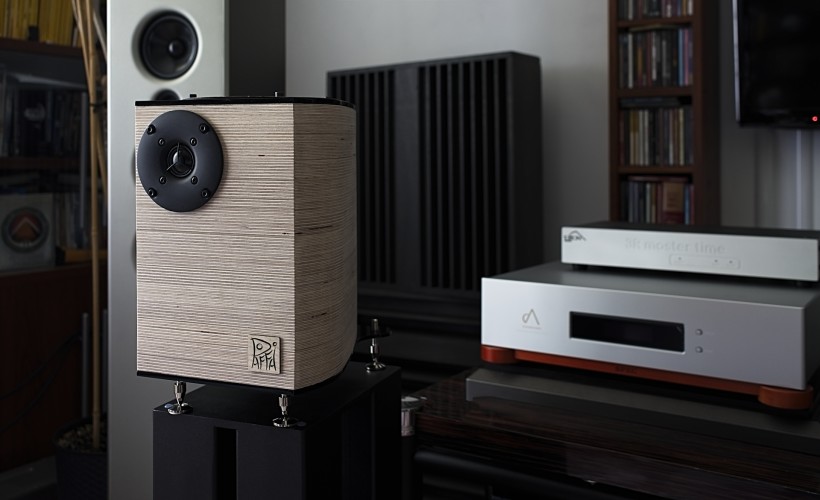 The ultimate challenge for any speakers, or audio system really, is classical music, especially a particularly complex one played by a big symphonic orchestra. Obviously there is no reproducing the real scale and dynamics of the orchestra at home no matter what system one uses (it would be really dangerous to one’s hearing too). So what one should focus on is a proper flow of music, system’s/speakers’ ability to convey complexity of the performance, true timbres of all instruments and myriad of tiny information that combined create an (almost) realistic experience. Other key factor is dynamics, not just the macro one but also the micro-dynamics that combined with good differentiation and high resolution allow listener to fully appreciate orchestral music. And again the Syzygy stood up to the challenge and managed to surprise me with how much information they were able to present and they did it in a precise, coherent way. The complexity of musical structures did not overwhelm them, neither did an abundance of details and subtleties. The flow of music seemed unconstrained, unforced and not limited by any factors.
The ultimate challenge for any speakers, or audio system really, is classical music, especially a particularly complex one played by a big symphonic orchestra. Obviously there is no reproducing the real scale and dynamics of the orchestra at home no matter what system one uses (it would be really dangerous to one’s hearing too). So what one should focus on is a proper flow of music, system’s/speakers’ ability to convey complexity of the performance, true timbres of all instruments and myriad of tiny information that combined create an (almost) realistic experience. Other key factor is dynamics, not just the macro one but also the micro-dynamics that combined with good differentiation and high resolution allow listener to fully appreciate orchestral music. And again the Syzygy stood up to the challenge and managed to surprise me with how much information they were able to present and they did it in a precise, coherent way. The complexity of musical structures did not overwhelm them, neither did an abundance of details and subtleties. The flow of music seemed unconstrained, unforced and not limited by any factors.
Yes, as mentioned before, there are elements of orchestral performance that are always somewhat limited when played by any home audio system, so what I am really saying is that with Syzygy I didn’t think about any limitations, they did not matter at all. It is easy to get distracted from music even by minor flows of the system’s performance, when you can hear that something is wrong, not as it should be, but it was not the case with the Hungarian speakers. They are small, incredibly musical and capable beasts that effortlessly keep listener’s attention focused on rich, fluid, one of a kind performance. The latter feature is actually an ability to differentiate recordings and it will be quite important for fans of classical music, as they (or rather: we) often listen to the same music pieces performed by various musicians or ensembles to hear the differences in interpretations. Using Syzygy I did it several times confirming my previous preferences for particular recordings. These preference have been, at least partially, based on listening these symphonies, quartets and operas using much, much more expensive systems/speakers. It speaks a great deal about the Raffai-Audio loudspeakers’ ability of an accurate and truthful music reproduction.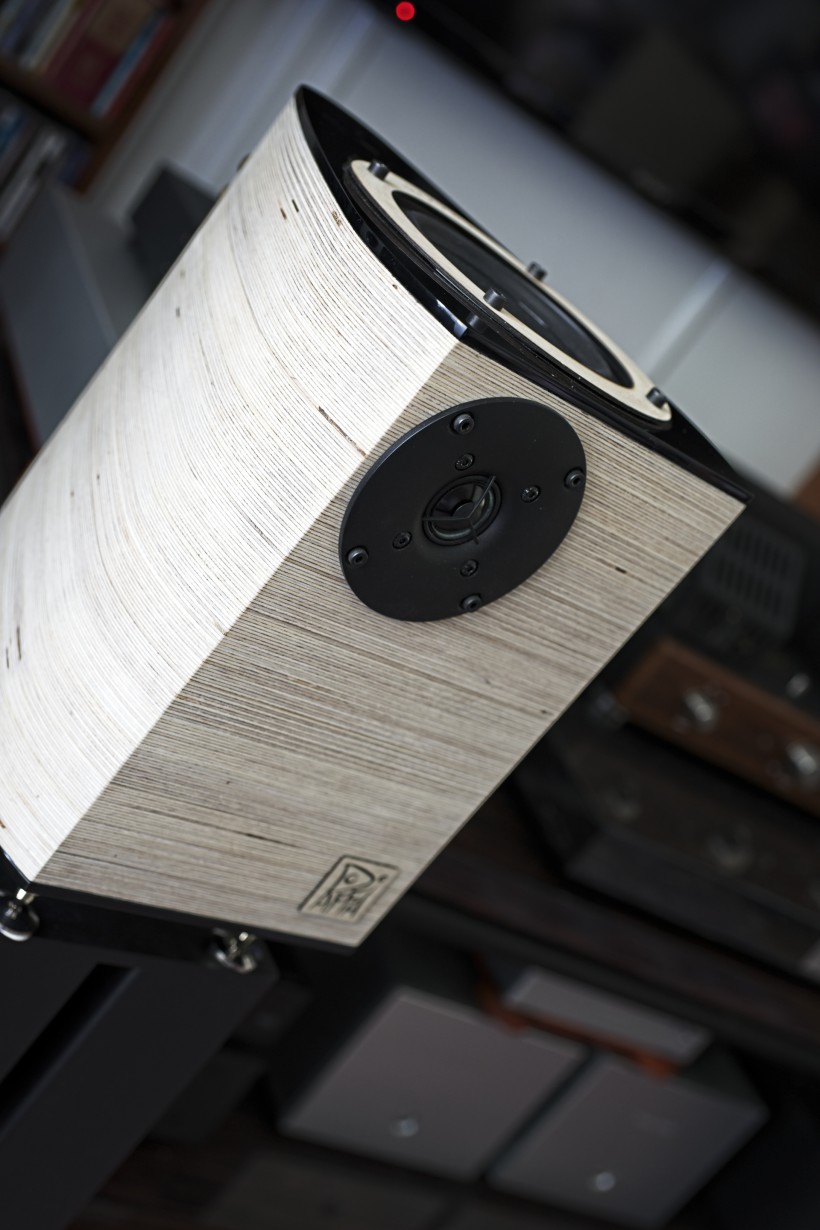
Summary
The design of the Raffai-Audio Syzygy speakers may seem exotic – at least that’s how I saw it at first. It does happen that some manufacturers come up with design ideas to differentiate their products even when these are not the best solution performance-wise. The Syzygy are not one of such cases. Their designers found their own way to create small, but powerful-sounding speakers that are capable of delivering very musical, convincing, highly enjoyable performance. They are versatile, which means they will play any music for you in a similarly convincing fashion. They are fully capable of proper differentiation between recordings, they are resolving and highly accurate in terms of timbre and dynamics and are able to convey even highly complex musical performances with clarity. The longer I listened to them the more “right” the music sounded for me. It’s not about Syzygy being the best speakers in the world but rather about certain level of competency and naturalness that allow listener to forget about technical side of sound reproduction and focus solely on music. Long story short – if what you’re looking for is as close contact with lively, breathing music and performers as it gets while listening to recordings in your room, the Raffai-Audio Syzygy loudspeakers paired with high quality system will do such job better than most similarly priced and even more expensive competitors I know. This is an impressive debut of this Hungarian brand. Bravo!
Technical specification (according to manufacturer):
- Design: 2-way bass-reflex
- Sensitivity: 85 dB / 1 W / 1 m
- Impedance: 8 Ohm (min. 6 Ohm @ 10 kHz)
- Maximum power: 60 W
- Speaker terminals: single, gold-plated
- Frequency response: 40 Hz to 40 kHz (-6 dB)
- Crossover: electric & acoustic
- Crossover frequency: 2,5 kHz
- Cutting slope: 12 dB
- Dimensions: 28 cm x 21 cm x 28 cm (H x W x D)
Price (when reviewed):
- Raffai-Audio Syzygy: 3.990 EUR
Manufacturer: RAFFAI-AUDIO
Associated equipment:
- Analogue front end: J.Sikora Basic MAX turntable, J.Sikora KV12 tonearm , AirTight PC-3, phonostages: Grandinote Celio mk IV, ESE Lab Nibiru V 2.5
- Digital source: a passive, custom PC with WIN10, Roon, Fidelizer Pro 7.3, JCat USB Femto card with iFi power supply, Hdplex linear power supply for PC, JCAT USB Isolator
- D/A Converter: LampizatOr Golden Atlantic +Ideon Audio 3R Master Time (USB signal regenerator)
- Power amplifier: GrandiNote Shinai
- Preamplifier: Audia Flight FLS1
- Loudspeakers: Ubiq Audio Model ONE Duelund Edition. GrandiNote MACH4
- Interconnects: Hijiri Million (RCA), Less Loss Anchorwave (RCA), KBL Sound Zodiac XLR, TelluriumQ Silver Diamond USB
- Speaker cables: LessLoss Anchorwave
- Power cables: LessLoss DFPC Signature, Gigawatt LC-3
- Power:Gigawatt PF-2 MK2 and Gigawatt PC-3 SE Evo+; a dedicated power line with Gigawatt LC-Y in-wall cable; Gigawatt G-044 Schuko and Furutech FT-SWS-D (R)
- Racks: Base VI, Rogoz Audio 3RP3/BBS
- Anti-vibration accessories: ROGOZ-AUDIO SMO40 and CPPB16 platforms and ROGOZ AUDIO BW40MKII feet, Franc Accessories Ceramic Disc Slim Feet and Wood Block Platform


